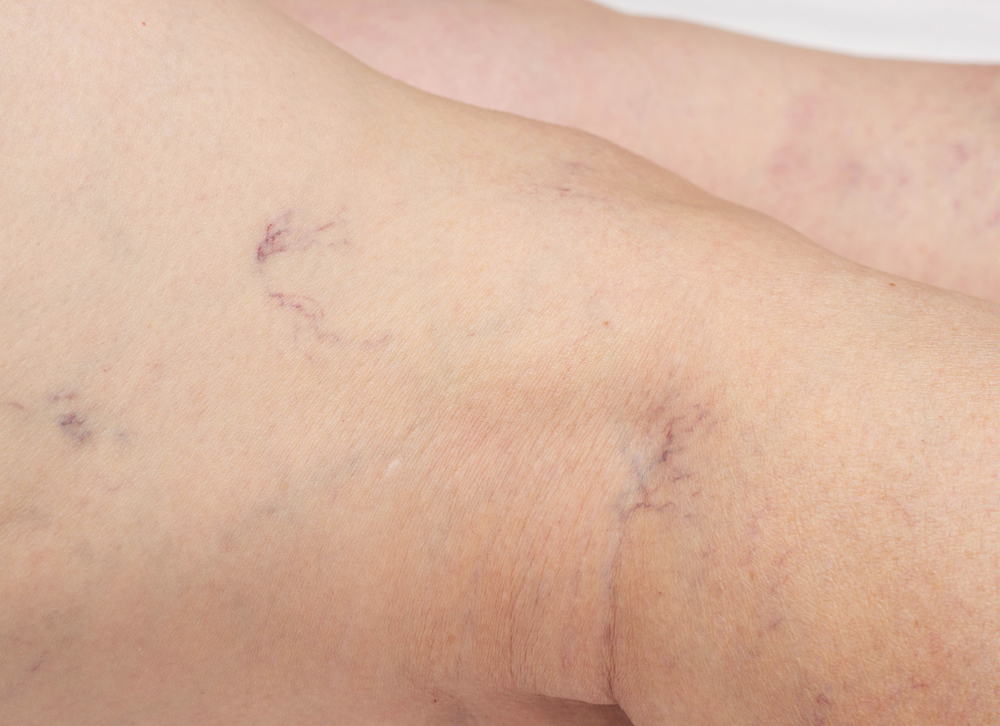When blood clumps together in veins near the surface of your skin, spider veins appear. Meanwhile, varicose veins twist and turn beneath the skin, revealing raised and swollen blood vessels. One key difference between the two is that varicose veins can be very painful. On the other hand, spider veins usually don’t hurt and only cause mild discomfort. Our medical specialists offer different treatments for spider veins and varicose veins at the Premier Dermatology and Mohs Surgery of Atlanta in Atlanta, GA.
What Causes Spider Veins and Varicose Veins?
Damaged vein valves prevent blood from flowing normally. When this happens, you’re likely to develop either varicose veins or spider veins. Both conditions are common among people in their 30’s and pregnant women. Other factors such as genetics, obesity, physical trauma, and hormonal fluctuations also play a role.
The Main Cause of Varicose Veins
Are you wondering what causes painful varicose veins? As blood pressure increases inside the veins, blood vessel walls become stretched. They eventually lose their elasticity. The valves weaken and become dark purple or blue. They also become enlarged, swollen, and painful.
Varicose veins may be the reason why your legs feel heavy, tired, or achy sometimes. They can also make you feel self-conscious about their unsightly appearance. Do you think you may have symptomatic varicose veins? When left untreated, they can lead to serious problems. These include rashes, infections, bleeding, sores, and blood clots.
The Main Cause of Spider Veins
Spider veins are different from varicose veins. They are also known as thread veins. They are smaller than varicose veins and are usually red. To many, they look similar to tree branches or spider webs. They appear under the skin, but they do not bulge out like varicose veins.
But don’t be fooled by the “milder” appearance of spider veins. They can also cause mild pain and discomfort. Mild discomfort caused by spider veins can lead to leg swelling and physical discomfort. Do you have spider veins that have formed as a result of underlying vein disease? They can be dangerous and will need professional care.
Is It Possible to Prevent Spider Veins and Varicose Veins?
There are some measures you can take to prevent the development of spider veins and varicose veins in your legs. The most common steps you can take include:
- Performing regular exercise to improve leg strength
- Weight control to avoid too much pressure on the legs
- Avoid crossing legs when sitting
- Elevate legs while resting
- Make use of compression stockings
- Avoid standing for long periods
Can You Completely Prevent Varicose Veins?
We know you’d like to maintain the appearance of smooth, evenly toned legs, but there isn’t truly a way to completely prevent varicose veins. Through exercise and proper nutrition, you can improve your blood circulation and muscle tone. Doing so may reduce your risk of developing varicose veins or getting additional ones.
Are you already suffering from varicose veins? It’s important to seek medical attention as soon as you can. They do not heal on their own and can lead to more serious ailments. Delaying treatment can also cause varicose veins to worsen.
Is Medical Treatment for Spider Veins Necessary?
Spider veins look less harmful than varicose veins, but the truth is that they also tend to worsen over time. It is rare for spider veins to go away on their own. In some situations, exercise may be able to help you feel better, by improving the circulation of blood throughout your body. By increasing your blood circulation, you can dramatically improve the appearance of unwanted spider veins.
Other helpful tips for minimizing the appearance of spider veins include:
- Bicycling and walking exercises
- Drinking more water
- Using natural remedies, such as witch hazel
When Do You Need to Seek Professional Treatment?
Do you have vein issues and experience any of the following symptoms? You might consider giving your doctor a call before things get worse. Keep an eye on signs such as:
- Pain and swelling in the legs
- Heavy feeling in your legs at the end of the day
- Skin patches become darker than normal
- Veins have become swollen, red, or warm
- Presence of leg sores or rashes
The Best Vein Treatment Options
Correcting underlying vein problems can provide you with the relief and comfort you need to live an active life. Nowadays, spider veins and varicose veins can be treated using minimally invasive techniques. Usually, you will not need anesthesia, hospitalization, or extended recovery time.
Sclerotherapy
A non-surgical treatment which involves the injection of a solution into your veins. Your body will eventually absorb the collapsed, treated veins. Nearby healthy blood vessels will carry the blood previously contained by the problematic veins.
Endovenous Laser Ablation
A minimally-invasive treatment that uses laser energy. This treatment option closes the problematic veins so that blood can flow through healthy veins instead.
Phlebectomy
A treatment option for large veins which may be located over a bony surface. It involves making a small incision to remove veins before treating them with sclerotherapy.
Schedule a Consultation for Professional Vein Treatments
Both spider veins and varicose veins can be unsightly, unflattering, and cause different levels of discomfort. They may have subtle differences in appearance, but it doesn’t mean that one is more or less deserving of professional treatment. Are you looking to eliminate these problematic veins and avoid them from becoming worse? Contact our specialists at Premier Dermatology and Mohs Surgery of Atlanta in Alpharetta, GA today and let’s discuss your treatment options!

